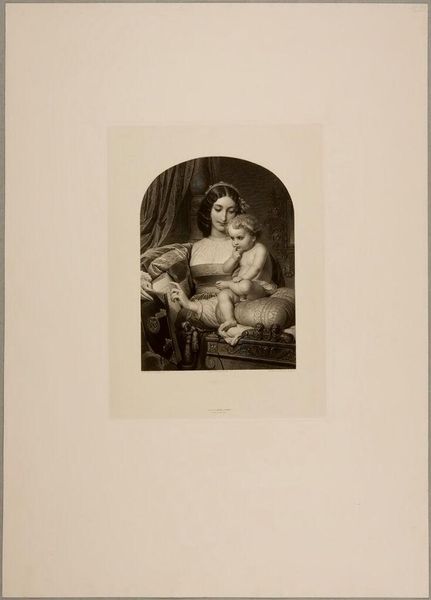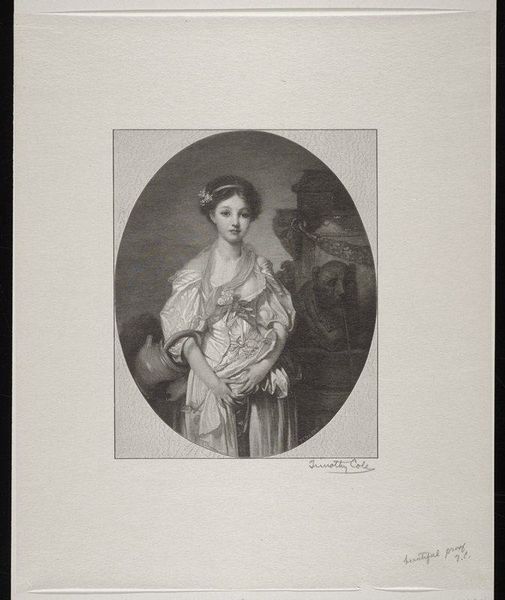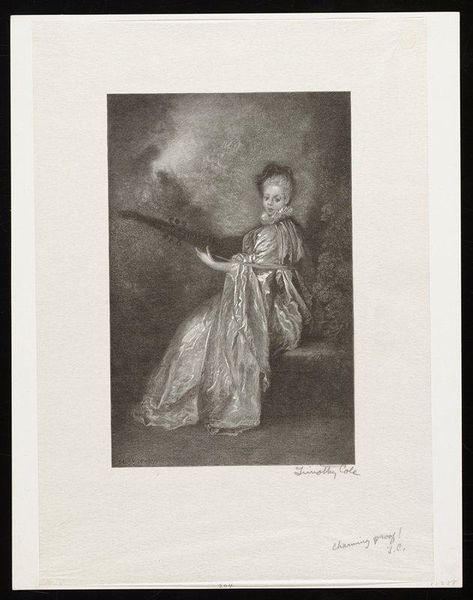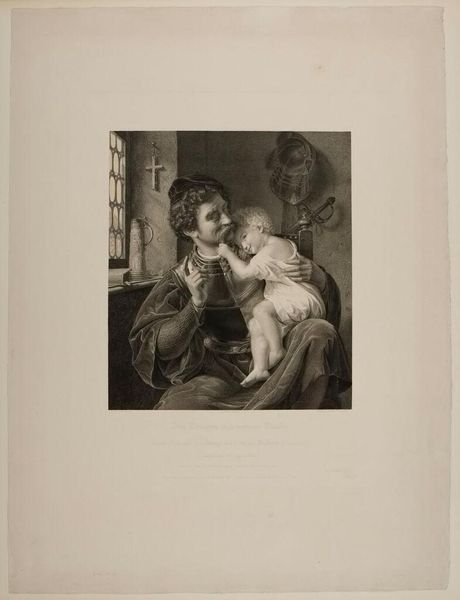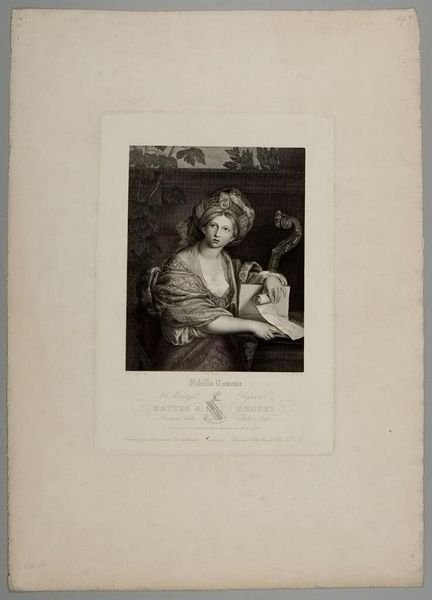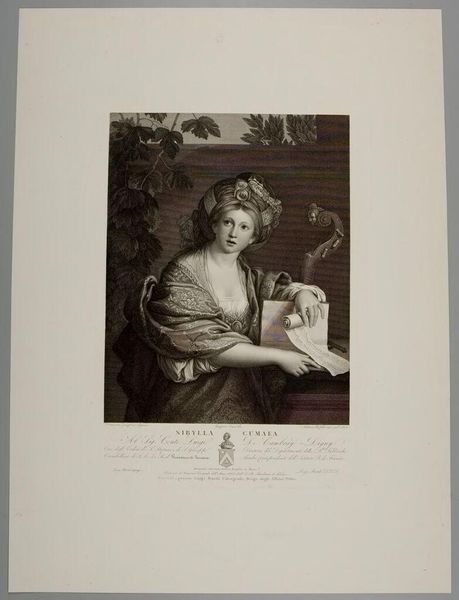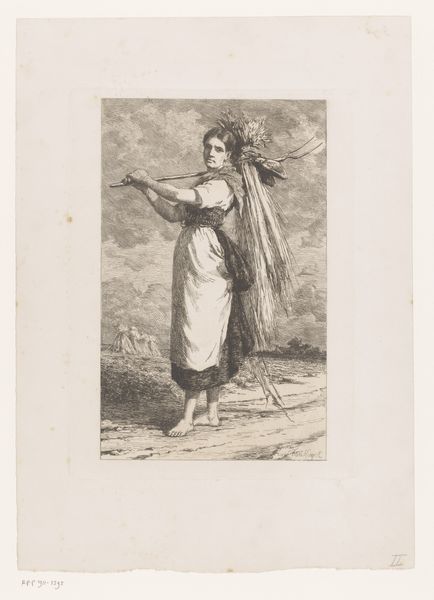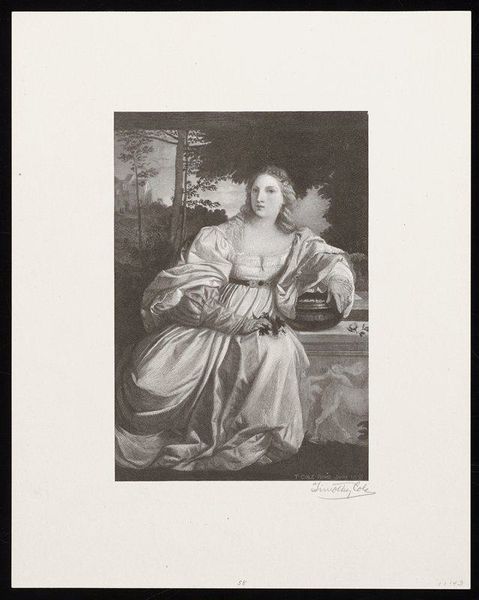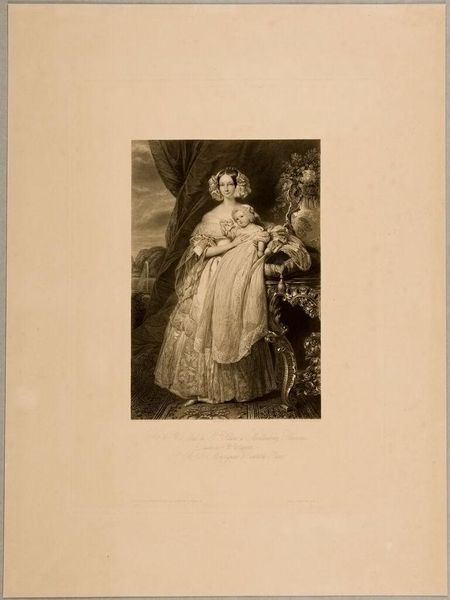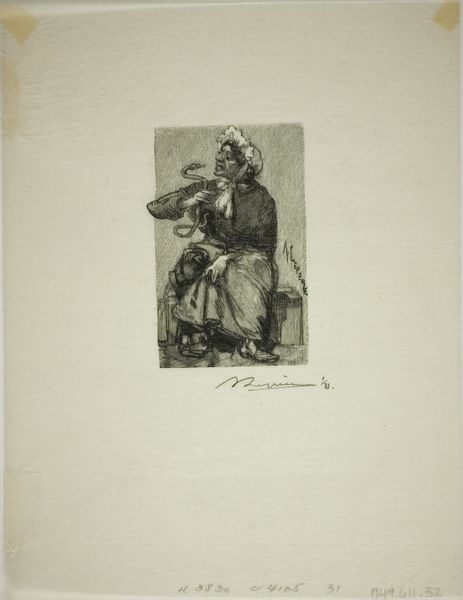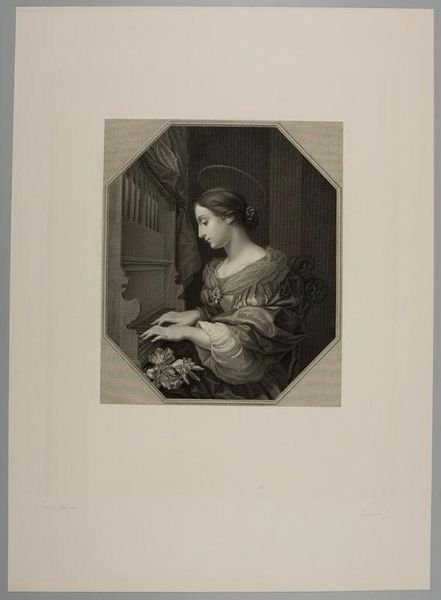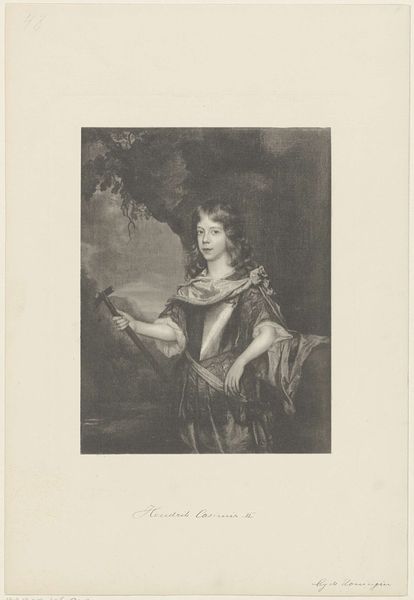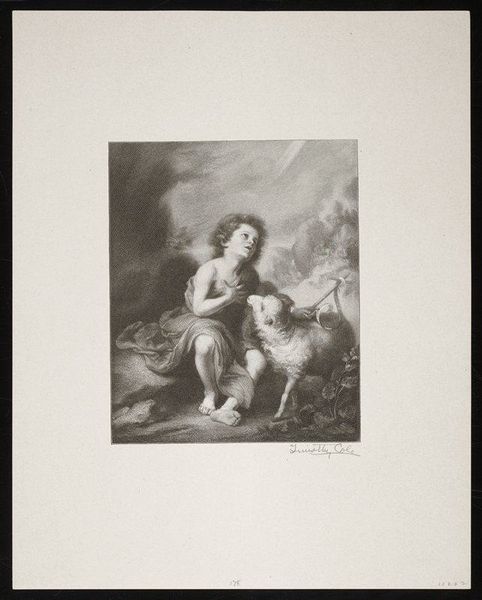
print, woodcut, wood-engraving
#
portrait
# print
#
woodcut
#
genre-painting
#
wood-engraving
#
realism
Dimensions: 7 1/16 x 5 1/16 in. (17.94 x 12.86 cm) (image)12 1/16 x 9 5/8 in. (30.64 x 24.45 cm) (sheet)
Copyright: No Copyright - United States
Curator: Here we have Timothy Cole's wood-engraving "Françoise Marie de Bourbon," created in 1909. It’s currently residing here at the Minneapolis Institute of Art. Editor: My immediate reaction is that there is something so fleeting and ephemeral captured in a very traditional and seemingly static format. There is an interesting tension, which comes across despite being a black and white print. Curator: It’s quite insightful that you sensed the tension right away. Cole was working at a time when social constructs of women, even children, were changing rapidly. While visually appearing like a standard portrait, the subtle symbolism speaks volumes. Editor: Symbolism is right. The soap bubbles for example, classically a memento mori image symbolizing the transience of life but here more a celebration of youth, no? Or is the artist deliberately referencing a tragic figure, inviting the viewer to contemplate the Bourbon legacy? Curator: It’s fascinating that you consider her legacy so intently. I think it's both—a celebration of childhood alongside that inherent acknowledgment of its brevity. Her casual dress is striking against the formal style, reflecting changing societal expectations, questioning who Françoise Marie will become within broader cultural forces. It presents a dichotomy, a girl playing versus the Bourbon princess, reflecting ongoing debates about inherited versus achieved identity. Editor: The engraving technique seems crucial here, the minute details suggesting layers upon layers. Not just of skill but cultural and historical. I’m drawn to her calm, almost melancholic gaze—very interesting, almost modern when considering her time. Curator: Absolutely, the fine lines achieved through wood engraving grant the work depth, reflecting those complex socio-political elements shaping identity and status. It captures a transitional moment in history as society began to reshape towards future realities. Editor: Ultimately, what impresses me most is that it encourages me to reflect not just on a historical portrait but it resonates within a continued discourse today. Curator: Agreed. This prompts a discussion of how identity is not a static entity but something that continues to transform across individual and cultural spaces.
Comments
No comments
Be the first to comment and join the conversation on the ultimate creative platform.
